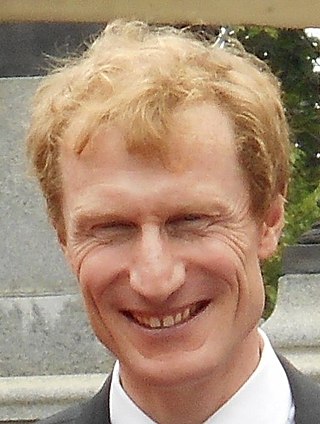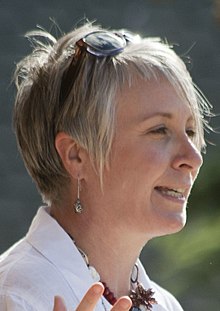
The minister of Crown–Indigenous relations is a minister of the Crown in the Canadian Cabinet, one of two ministers who administer Crown-Indigenous Relations and Northern Affairs Canada (CIRNAC), the department of the Government of Canada which is responsible for administering the Indian Act and other legislation dealing with "Indians and lands reserved for the Indians" under subsection 91(24) of the Constitution Act, 1867. The minister is also more broadly responsible for overall relations between the federal government and First Nations, Métis, and Inuit.
In Canada, an Indian reserve is defined by the Indian Act as a "tract of land, the legal title to which is vested in Her Majesty, that has been set apart by Her Majesty for the use and benefit of a band." Reserves are areas set aside for First Nations, an indigenous Canadian group, after a contract with the Canadian state, and are not to be confused with indigenous people's claims to ancestral lands under Aboriginal title.

Six Nations is demographically the largest First Nations reserve in Canada. As of the end of 2017, it has a total of 27,276 members, 12,848 of whom live on the reserve. It is the only reserve in North America that has representatives of all six Haudenosaunee nations living together. These nations are the Mohawk, Cayuga, Onondaga, Oneida, Seneca and Tuscarora. Some Lenape also live in the territory.

The Mohawks of the Bay of Quinte (MBQ) are a Mohawk First Nation within Hastings County, Ontario. They control the Tyendinaga Mohawk Territory, which is a 7,362.5 ha (18,193-acre) Mohawk Indian reserve on the Bay of Quinte in southeastern Ontario, Canada, east of Belleville and immediately to the west of Deseronto. They also share Glebe Farm 40B and the Six Nations of the Grand River reserves with other First Nations.
First Nations in Ontario constitute many nations. Common First Nations ethnicities in the province include the Anishinaabe, Haudenosaunee, and the Cree. In southern portions of this province, there are reserves of the Mohawk, Cayuga, Onondaga, Oneida, Seneca and Tuscarora.
Neskantaga First Nation is a remote Oji-Cree First Nation band government in the northern reaches of the Canadian province of Ontario, situated along the shore of Attawapiskat Lake in the District of Kenora.

Deseronto is a town in the Canadian province of Ontario, in Hastings County, located at the mouth of the Napanee River on the shore of the Bay of Quinte, on the northern side of Lake Ontario.
First Nations Police is a collective of aboriginal police forces in Ontario. FNP agencies are responsible for police duties concerning reserves in Ontario. First Nations Constables are appointed by the Commissioner of the Ontario Provincial Police and have the powers of a Police Officer within the Province of Ontario for the purpose of carrying out the duties specified in their appointment.
Kingfisher First Nation is an Oji-Cree First Nation reserve located 350 kilometres (220 mi) north of Sioux Lookout, Ontario, Canada. It is accessible by air all year and by waterway in summer and ice roads in winter. As of December 2009, the First Nation had a total registered population of 500 people, the on-reserve population being 462. The community speaks the Oji-Cree language, but most of it is fluent in English as well.

Water supply and sanitation in Canada is nearly universal and generally of good quality, but a lack of clean drinking water in many First Nations communities remains a problem. Water use in Canada is high compared to Europe, since water tariffs are low and 44% of users are not metered.
Shoal Lake 40 First Nation is an Ojibway or Ontario First Nation reserve located in the Eastman Region of Manitoba and the Kenora District of Ontario. The total registered population in December 2022 was 683, of which the on-reserve population was 306. The First Nation is a member of the Bimose Tribal Council, a Regional Chief's Council that is a member of the Grand Council of Treaty 3.

Alderville First Nation is a band of Mississaugas, a sub-nation of the Ojibways. The Alderville and Sugar Island 37A reserves belong to that First Nation band government.
The following is an alphabetical list of topics related to Indigenous peoples in Canada, comprising the First Nations, Inuit and Métis peoples.

The Sapotaweyak Cree Nation is a First Nations band government whose reserves are located in northern Manitoba, north-east of Swan River, approximately 400 kilometres northwest of Winnipeg.
The history of the First Nations is the prehistory and history of present-day Canada's peoples from the earliest times to the present day with a focus on First Nations. The pre-history settlement of the Americas is a subject of ongoing debate. First Nation's oral histories and traditional knowledge, combined with new methodologies and technologies —used by archaeologists, linguists, and other researchers—produce new—and sometimes conflicting—evidence.
Indigenous or Aboriginal self-government refers to proposals to give governments representing the Indigenous peoples in Canada greater powers of government. These proposals range from giving Aboriginal governments powers similar to that of local governments in Canada to demands that Indigenous governments be recognized as sovereign, and capable of "nation-to-nation" negotiations as legal equals to the Crown, as well as many other variations.

Tyendinaga Mohawk Territory is the main First Nation reserve of the Mohawks of the Bay of Quinte First Nation. The territory is located in Ontario east of Belleville on the Bay of Quinte. Tyendinaga is located near the site of the former Mohawk village of Ganneious.:10

Indigenous Services Canada is one of two departments in the Government of Canada with responsibility for policies relating to Indigenous peoples in Canada. ISC's mandate is to work "collaboratively with partners to improve access to high quality services for First Nations, Inuit and Métis."
In Canada, First Nations communities have been under long-term drinking water advisories (DWAs) for decades. A long-term drinking water advisory is an advisory that has been in place for over a year.













